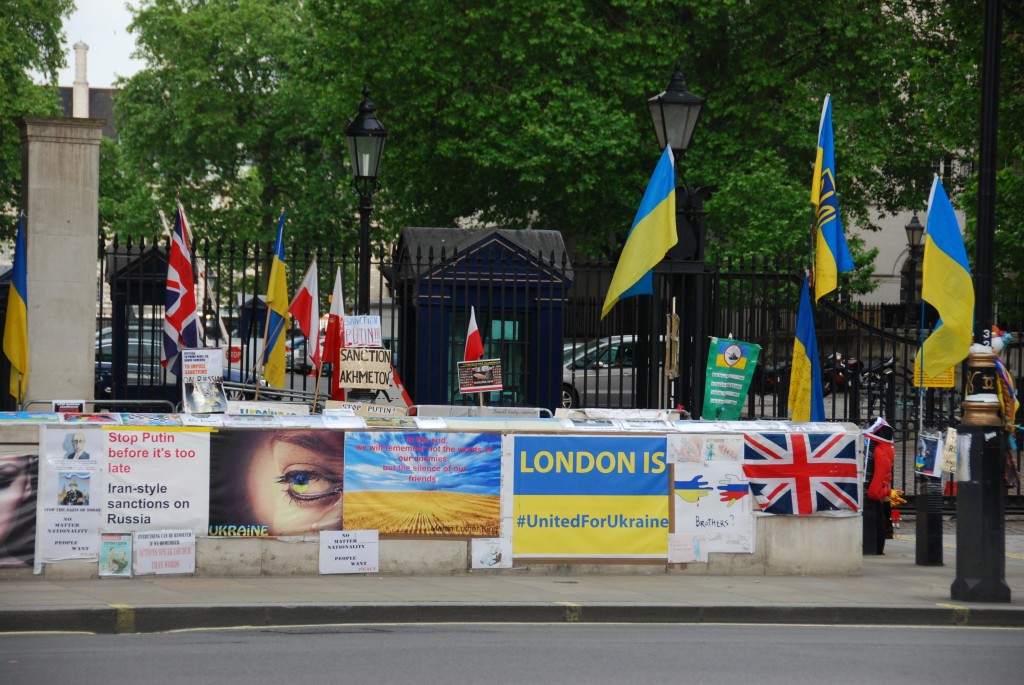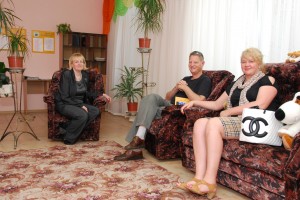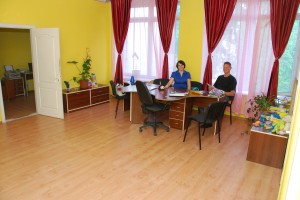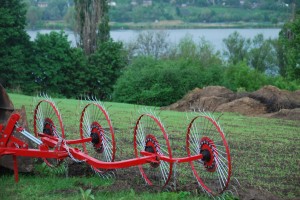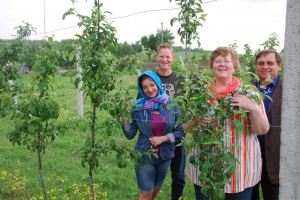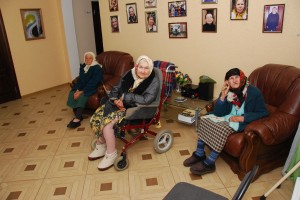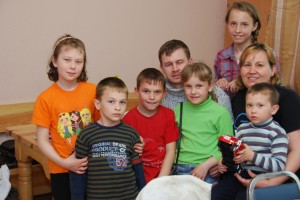Following is a brief summary of the first five days of journey to Ukraine by Bruce Elliott and me.
16 and 17 May 2014
Travel from San Diego to Kiev via overnight in London.
Spent the layover evening in London walking the streets downtown. Across the street from No. 10 Downing Street was this display:
I spoke with Olga who was staffing the display. Olga is from Ukraine and has lived in London for 10 years. I told her of our mission, and that we are praying for Ukraine. She seemed blessed and encouraged.
Rode the London Eye. Spectacular views of Westminster, Big Ben, River Thames, downtown, and more.
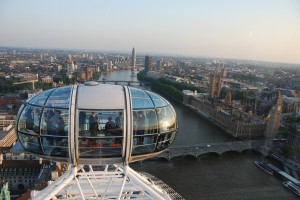 On the leg from London to Kiev I just happened to sit next to the Reuters producer from London en route to cover the Ukraine election on 25 May. She opened the Reuters bureau in Kiev after the collapse of the Soviet Union and her husband is Ukrainian. She took an interest in the ministry. I gave her a copy of Rescuing Ukrainian Children. After the election Reuters may have an interest in following up on the work of Children’s Rescue Center and Father’s House.
On the leg from London to Kiev I just happened to sit next to the Reuters producer from London en route to cover the Ukraine election on 25 May. She opened the Reuters bureau in Kiev after the collapse of the Soviet Union and her husband is Ukrainian. She took an interest in the ministry. I gave her a copy of Rescuing Ukrainian Children. After the election Reuters may have an interest in following up on the work of Children’s Rescue Center and Father’s House.
18 May 2014
Arrived in Kiev. After settling in, walked through Maidan Nezalezhnosti (Independence Square), site of the citizen protests from November 2013 through March 2014, culminating in snipers killing 110 protesters, police wounding 2,000 others, and former president Yanukovych fleeing the country.
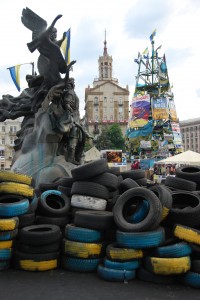 The violence has ceased, and the throng of some 30,000 has disbursed, but the encampment continues. The atmosphere is somber. Hundreds are still occupying. They are earnest, and alert. Visitors such as yours truly wander among the tents, barricades, and charred structures in reverent, hushed tones.
The violence has ceased, and the throng of some 30,000 has disbursed, but the encampment continues. The atmosphere is somber. Hundreds are still occupying. They are earnest, and alert. Visitors such as yours truly wander among the tents, barricades, and charred structures in reverent, hushed tones.
Conspicuously absent are any police, officials or physical barriers guiding or limiting the public. All present are respectful and well behaved. Frankly, such self-restraint and good behavior would be thoroughly unexpected in the US, and probably many other places. This does not feel like anarchy. It feels more like a genuine populist, corporal movement, where unity of purpose is organic rather than imposed top down.
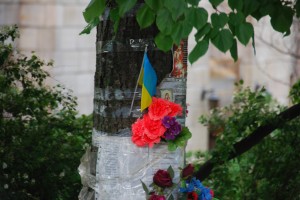 Memorials, flowers, make-shift shrines, and photographs of the slain are everywhere. I’m told many of the barricades have been removed, but still dozens remain. They were erected on the three arterial streets that lead into the Square, one in particular leads up the hill to the police, parliament, presidential offices, and other government buildings. The barricades were built to defend against attacks and invasion that were expected from that direction. The barricades are built from stones torn from the streets, tires, and an array of debris.
Memorials, flowers, make-shift shrines, and photographs of the slain are everywhere. I’m told many of the barricades have been removed, but still dozens remain. They were erected on the three arterial streets that lead into the Square, one in particular leads up the hill to the police, parliament, presidential offices, and other government buildings. The barricades were built to defend against attacks and invasion that were expected from that direction. The barricades are built from stones torn from the streets, tires, and an array of debris.
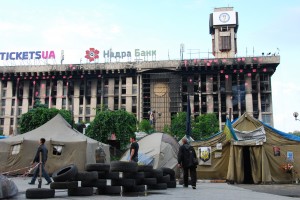 Shadowing over the Square is seven-story cement office building built in the bland Soviet style, the former offices of the trade union. The building was used as a make shift field hospital and commissary during the demonstration. Unidentified uniformed soldiers invaded the building, breaking arms and legs of those present to prevent them from fleeing, and set the building on fire. An unknown number died. The vacant, smoke-stained building now stands as a silent monolith imposing a reminder of the recent violence over the still-occupied Square.
Shadowing over the Square is seven-story cement office building built in the bland Soviet style, the former offices of the trade union. The building was used as a make shift field hospital and commissary during the demonstration. Unidentified uniformed soldiers invaded the building, breaking arms and legs of those present to prevent them from fleeing, and set the building on fire. An unknown number died. The vacant, smoke-stained building now stands as a silent monolith imposing a reminder of the recent violence over the still-occupied Square.
The encampment is less than a mile square. At its borders life and business continue with no apparent disruption. A restaurant with linen table cloths bustles with business literally in the shadow of the burned-out trade union building.
Further down the street, just beyond the barricades, is a massive building-size banner, covering two sides of a ten-story building. The banner is the Ukrainian flag, with the words emblazoned in Ukrainian on one building face, and in Russian on the adjoining, perpendicular face, each of which translated state “One Country.” The statement is a plea for unity in response to calls and threats for splitting the country. The statement in Russian as well as Ukrainian is a gesture reaching out to those with pro-Russian sentiment.
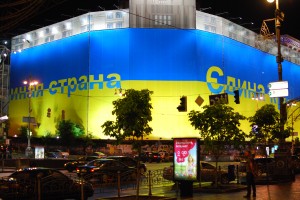 What will happen here next is hard to tell. National elections are one week away. Violent conflicts and Russian presence continue in eastern Ukraine, and Crimea is still under Russian control. The current protest seems more tentatively paused rather than ended. Renewal of the protest, and removal of the encampment with return of the streets to their regular pubic function, both seem like about equal possibilities. In any event, the recent profound events here seem destined to leave their mark in unforgettable ways.
What will happen here next is hard to tell. National elections are one week away. Violent conflicts and Russian presence continue in eastern Ukraine, and Crimea is still under Russian control. The current protest seems more tentatively paused rather than ended. Renewal of the protest, and removal of the encampment with return of the streets to their regular pubic function, both seem like about equal possibilities. In any event, the recent profound events here seem destined to leave their mark in unforgettable ways.
19 May 2014
Revisited Myakoscava, the government temporary shelter for children brought in by the police or other authorities from the street, or unsafe homes. Had the privilege of spending time with the director, Irena Duvanskaja.
The current population at Myakoscava is about 45 to 50 children. About half of these were brought from Maidan during the unrest. One child is recovering from burns.
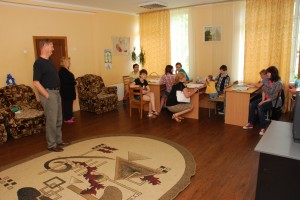 The children who come to Myakoscava usually come from homes largely characterized by neglect. Irena said parents were too busy working, and were not giving their children attention and affection. This seemed incredible to me, that something so basic could be missing to a degree of needing to take children into a shelter. And then later in the day we went on four home visits, where I saw firsthand what Irena was referring to. It was much worse than she characterized.
The children who come to Myakoscava usually come from homes largely characterized by neglect. Irena said parents were too busy working, and were not giving their children attention and affection. This seemed incredible to me, that something so basic could be missing to a degree of needing to take children into a shelter. And then later in the day we went on four home visits, where I saw firsthand what Irena was referring to. It was much worse than she characterized.
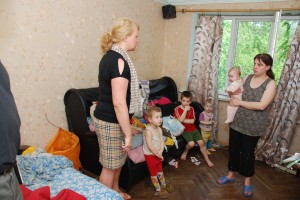
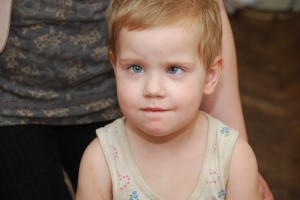
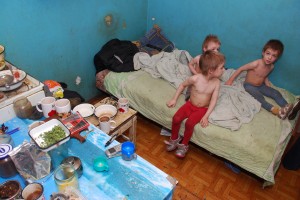
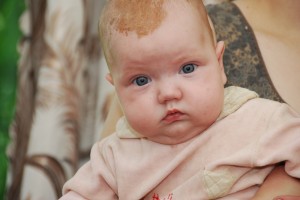
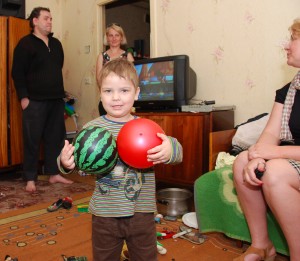 Three of the four apartments were retched squalor. Poverty and scarcity are one thing, and these were part of the dynamic. But it was far worse, with filth and debris everywhere. The cramped quarters had tiny rooms doubling as bedrooms and kitchens. What served as kitchen or cooking areas was revolting, with stagnant cooking pots and encrusted food remnants. In one apartment a potty chair, partly filled and looked never to have been cleaned, sat next to the crib. Crammed in these quarters are young children, partially clothed and themselves filthy, watching tv and not being allowed even to go outside and play. The adults in these environments more non-functional than dysfunctional. They seem to be in a stupor and nurturing their children is simply not happening.
Three of the four apartments were retched squalor. Poverty and scarcity are one thing, and these were part of the dynamic. But it was far worse, with filth and debris everywhere. The cramped quarters had tiny rooms doubling as bedrooms and kitchens. What served as kitchen or cooking areas was revolting, with stagnant cooking pots and encrusted food remnants. In one apartment a potty chair, partly filled and looked never to have been cleaned, sat next to the crib. Crammed in these quarters are young children, partially clothed and themselves filthy, watching tv and not being allowed even to go outside and play. The adults in these environments more non-functional than dysfunctional. They seem to be in a stupor and nurturing their children is simply not happening.
The Children’s Rescue Center staff do what they can to counsel and cajole response from the parents. In the worst cases they finally refer the family to the governing authorities to remove the children. That process was initiated in one of the apartments we visited while we were there. The parents have neglected to obtain treatment for two of their children, a boy and a girl ages 8 and 10, for TB and lice, or to send them to school.
Back at Myakoskova, Irena is developing a plan for temporarily placing children with foster families, which has not been the culture historically. Still, the plan is hopefully to reunite children with their families if safe to do so rather than keep children in long-term foster or group care, or place them for adoption.
Irena is fostering contact for the children with local football (soccer) and kickboxing celebrities. The children turn over too frequently to organize them into regular teams and leagues. This effort is cultivating enthusiasm and morale for the kids. The kids are very active. Half are in local schools. Trainers come to coach the kids in sports.
We ended the day at a new facility opened by Children’s Rescue Center named “Achievement.” Achievement offers after school programs of dance, art, crafts, English lessons and bible studies. Parents come as well. Achievement is another way to connect with families, encourage health and good decisions, and share the gospel.
20 May 2014
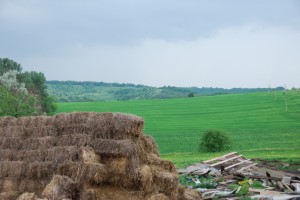 We travel 200 kilometers to another Father’s House facility, Father’s House Bethel, in the town of Vatutina. Vatutina is a town of some 25,000 people set in rolling hills of farms and forests. Bethel is a two-story complex with ministries to the elderly, young mothers and children, refugees, and youth transitioning from prison or foster care into young adulthood. Bethel also includes a farm several kilometers away that includes a newly planted apple orchard of 5,000 trees. The farm has cattle, hogs, geese, and is planted with alfalfa. The plan is for the farm to make Bethel self-sustaining, which is on course for happening in two to three years.
We travel 200 kilometers to another Father’s House facility, Father’s House Bethel, in the town of Vatutina. Vatutina is a town of some 25,000 people set in rolling hills of farms and forests. Bethel is a two-story complex with ministries to the elderly, young mothers and children, refugees, and youth transitioning from prison or foster care into young adulthood. Bethel also includes a farm several kilometers away that includes a newly planted apple orchard of 5,000 trees. The farm has cattle, hogs, geese, and is planted with alfalfa. The plan is for the farm to make Bethel self-sustaining, which is on course for happening in two to three years.
The elder care has two units, independent living, and assisted living. The assisted living unit is staffed with four nurses and also functions as a hospice providing end of life care. The residents in the assisted living unit are disabled, and several are bedridden. The residents of the independent living unit are quite active, as they are able, in working on the farm, the kitchen, and around the facility.
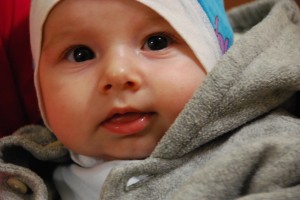
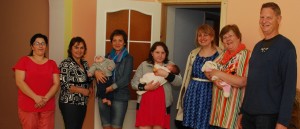 The mothers and children’s center receives mothers with crisis pregnancies, and mothers and children who are at risk of abuse or who are destitute. In some cases after government intervention the government may offer residency at Father’s House Bethel in lieu of removing the child from the home.
The mothers and children’s center receives mothers with crisis pregnancies, and mothers and children who are at risk of abuse or who are destitute. In some cases after government intervention the government may offer residency at Father’s House Bethel in lieu of removing the child from the home.
Two refugee families are living at Bethel, one from Crimea, and one from eastern Ukraine. Another refugee family from Crimea has converted from Islam to Christianity is living in the village.
The goal of Fathers House, in both the Kiev orphanage and the Bethel care facility, is to live out James 1:27 to care or widows and orphans in their distress, to show mercy to the most vulnerable, and thereby demonstrate the father heart of God. It’s happening, and it is a thrill to see.
~~~

